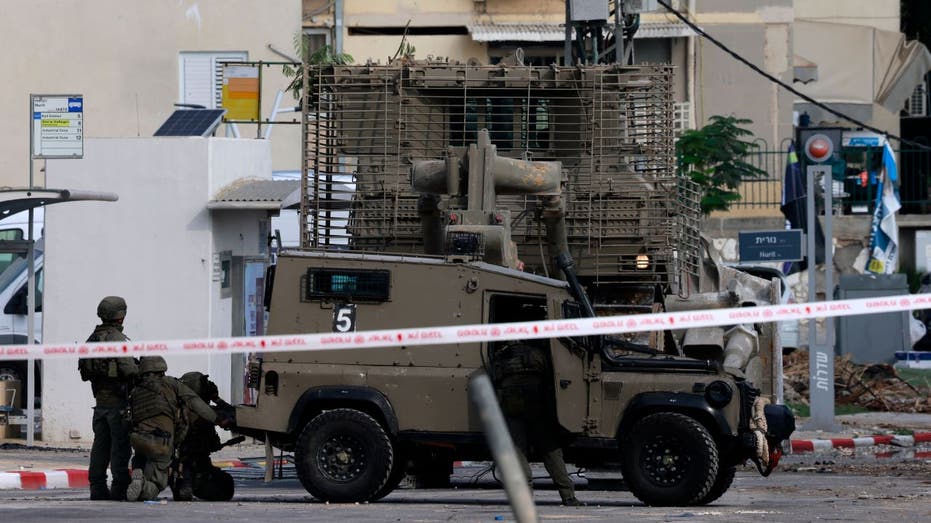Toggle Navigation
Conflict in the Middle East may create new risks to the global economic outlook, leaving central bankers facing renewed inflationary pressures even as they continue to deal with the economic fallout of the COVID pandemic and Russia’s invasion of Ukraine a year ago.
Iran-backed Hamas terrorists struck Israel over the weekend, killing at least 700 in the deadliest attacks the country has experienced in decades. Israel’s government has launched airstrikes on the Hamas-controlled Gaza Strip and is mobilizing military reservists in preparation for a response, while Hezbollah – an Iran-backed terror proxy based in Lebanon – has expressed support for Hamas and remains a threat on Israel’s northern border.
The prospect of broader conflict in the Middle East could add to the global instability sparked by Russia’s invasion of Ukraine nearly 20 months ago, disrupting supply chains and dragging down economic confidence around the world.
The impact would depend on the duration and intensity of the conflict, as well as whether it spreads to other parts of the region – which is home to major oil producers like Iran and Saudi Arabia plus major shipping lanes that run through chokepoints at the Strait of Hormuz, Bab-el-Mandeb, and Suez Canal.

Israeli troops gather near a cordoned-off Israeli police station that was damaged during battles to dislodge Hamas militants who were stationed inside, on October 8, 2023. Israel's prime minister of October 8 warned of a "long and difficult" war, as (Photo by MENAHEM KAHANA/AFP via Getty Images / Getty Images)
Agustin Carstens, general manager of the Bank of International Settlements, said in a presentation to the National Association for Business Economics that it’s "too early to say" what the economic implications of a Middle East conflict may be, although oil and equity markets may see immediate fallout.
"Any source of economic uncertainty delays decision-making, increases risk premium, and especially given that region… there is an apprehension about where oil is going to open," said Carl Tannenbaum, chief economist with Northern Trust.
He added that markets will be following "what the scenarios are looking like" and whether, after decades of instability in the Middle East, this outbreak of violence plays out differently. "The question will be is this iteration something that will throw the long-term equilibrium out of balance?"

A salvo of rockets is fired by Palestinian militants from Gaza as an Israeli missile launched from the Iron Dome defense missile system attempts to intercept the rockets, fired from the Gaza Strip, over the city of Netivot in southern Israel on Octob (Photo by MAHMUD HAMS/AFP via Getty Images / Getty Images)
"The conflict poses a risk of higher oil prices, and risks to both inflation and the growth outlook," said Karim Basta, chief economist at Ill Capital Management.
Higher oil prices in particular could dim economic confidence with resurgent inflation in energy prices paid by consumers at the pump.
Those risks could leave the Fed in a bind as it considers whether to raise interest rates one more time this year and weighs how long to keep rates elevated.

Supporters of Israel face people rallying in support of Palestinians in Times Square in New York on October 8, 2023, after the Palestinian militant group Hamas launched an attack on Israel. (Photo by BRYAN R. SMITH/AFP via Getty Images / Getty Images)
Federal Reserve officials have been monitoring a recent rise in U.S. Treasury bond yields for indications that investors may have pushed financial conditions beyond what’s needed to cool inflation and raised the risk of cooling the economy too dramatically – potentially derailing the Fed’s desired "soft landing" for this inflationary cycle.
U.S. Treasuries are generally considered a safe haven in times of economic uncertainty and crises, so the conflict could spur a flight by investors in search of relative security. Bond prices and interest rates are inversely correlated, so greater demand for Treasurys would help bring down interest rates.
While falling interest rates can serve as a warning sign for a rise in inflation by encouraging consumers and businesses to borrow and spend more, the context of a new regional war in the Middle East could cause markets to draw a different conclusion in this case.